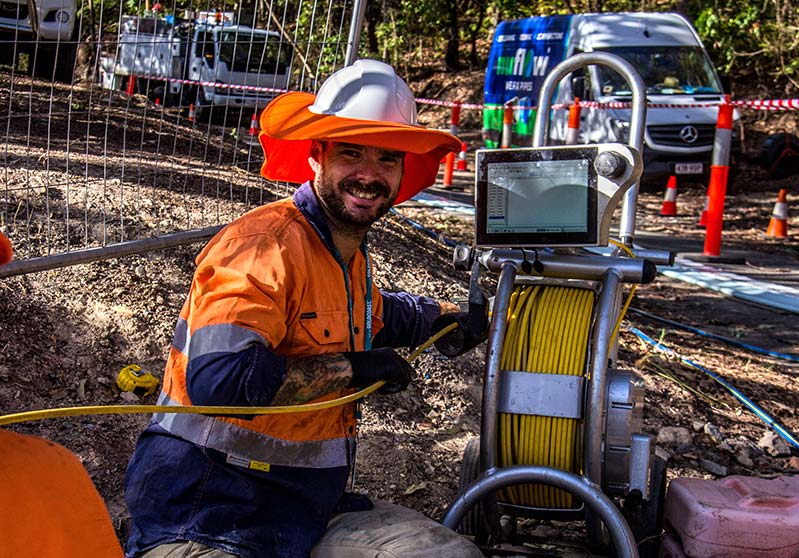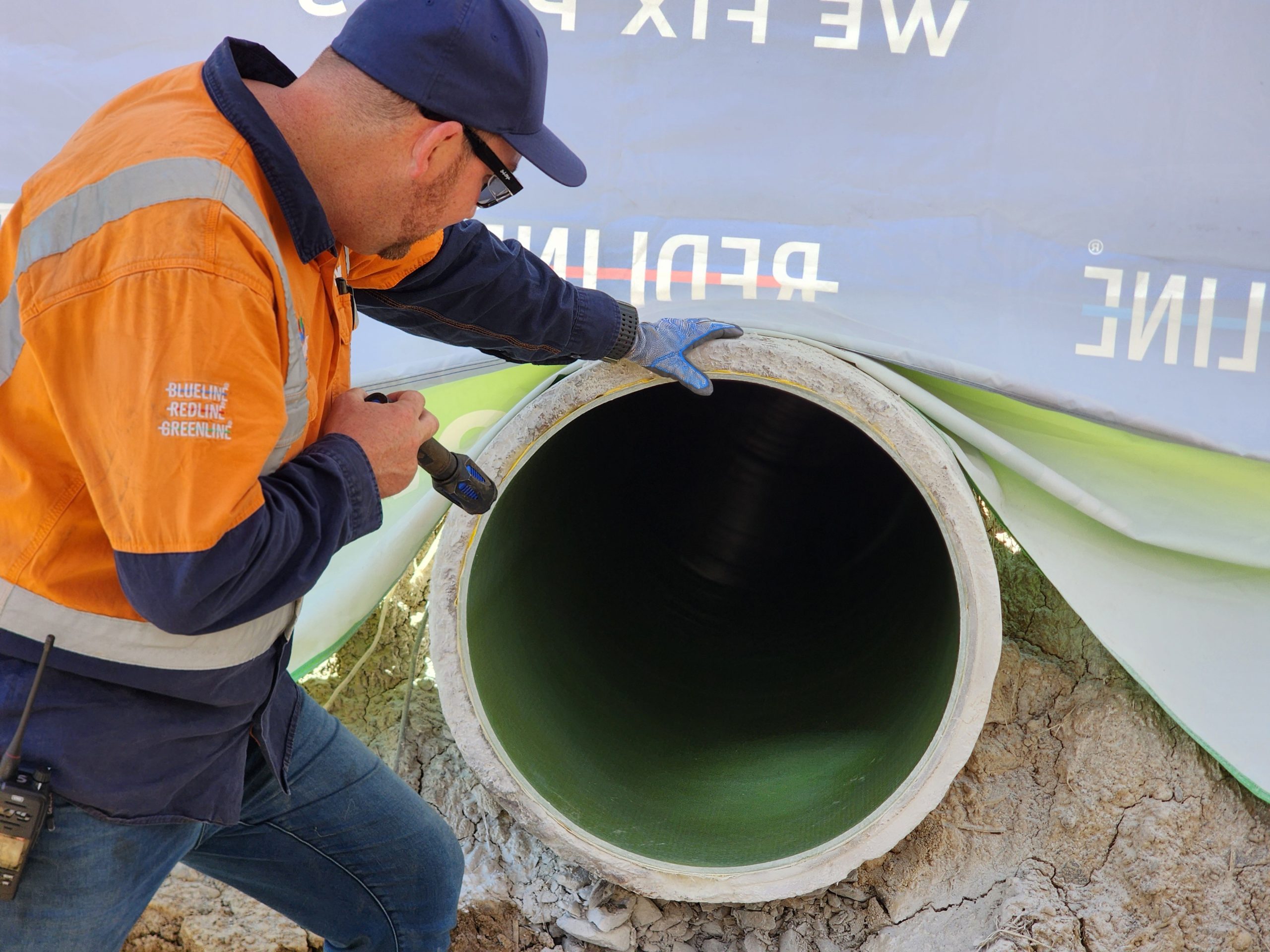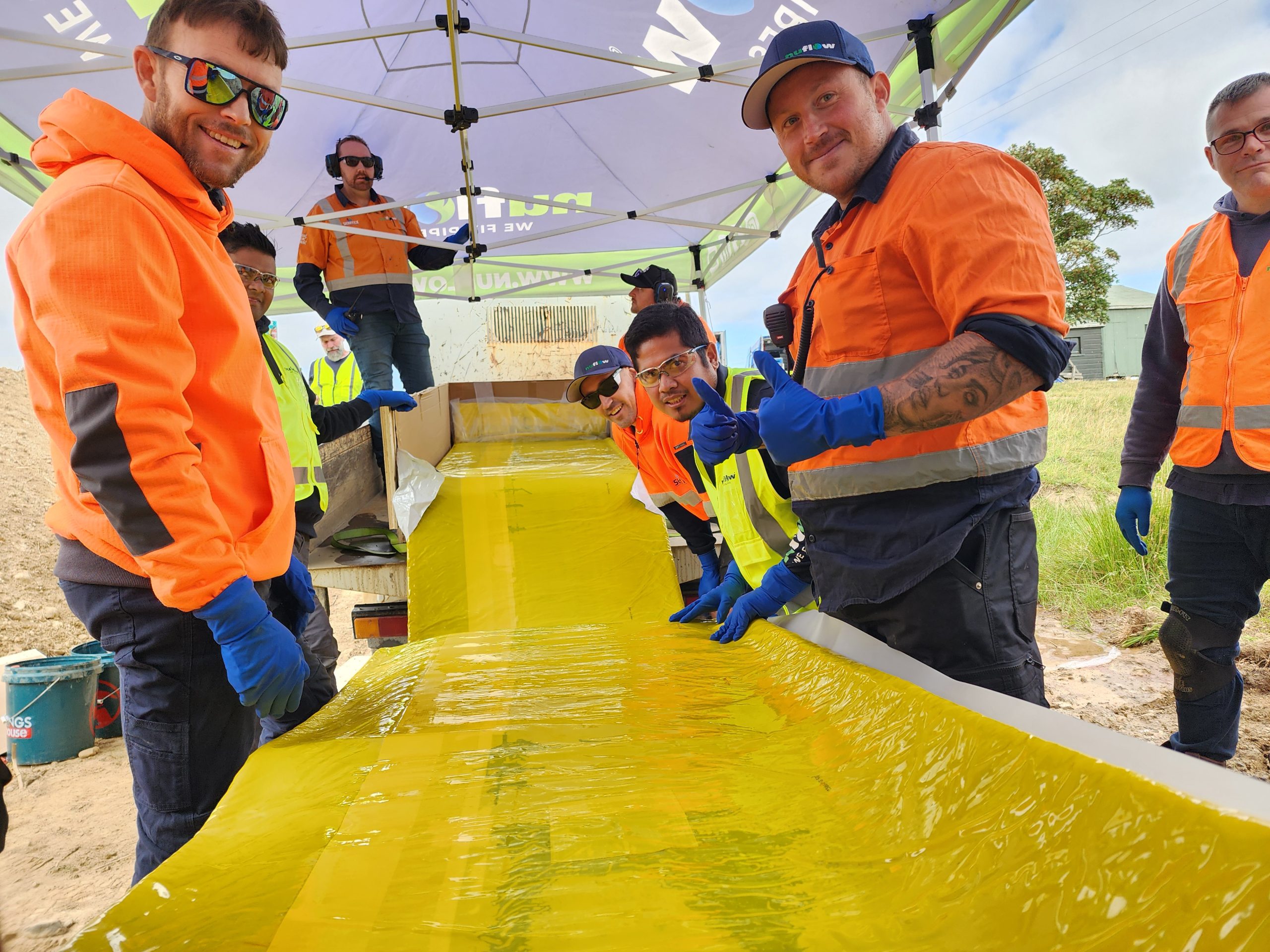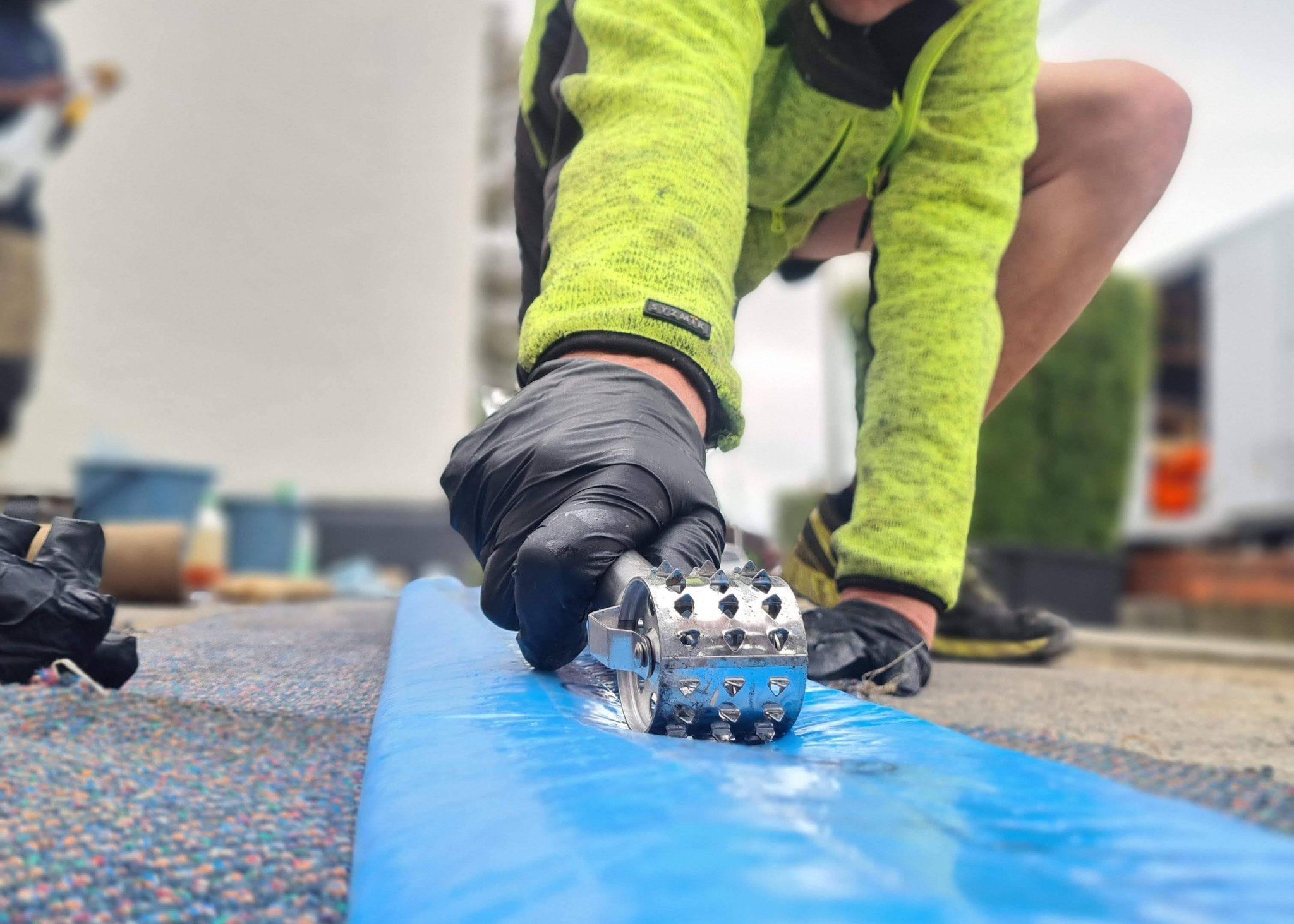Enquire about our CCTV Pipe Inspection Service
Building and facility managers using CCTV pipe inspections for proactive maintenance or reactive repairs are reducing operational costs and increasing efficiency.
There are three ways in which CCTV pipe inspections can be used by facility managers to more effectively optimise their building’s performance. They are:
- as a REACTIVE tool to accurately locate and determine the cause and extent of damage when an emergency sewer or drainage repair is required
- as a PROACTIVE strategy to better manage and maintain a building’s pipe network, thereby reducing costs and improving efficiency
- as an investigative, evidentiary and planning resource, to be used in a range of circumstances such as renovation planning, tenancy disputes or insurance/warranty claims.
While CCTV pipe inspections can be financially beneficial in each of these circumstances, it is through the proactive use of the technology that facility managers are able to derive the greatest benefit. This article will consider how CCTV cameras work, the advantages and cost-savings they offer for best-practice facility management and some important things to consider before engaging a contractor.
Good Facility Management Practices for Pipes
According to the ‘Facilities Management Good Practice Guide‘ optimising the performance of a building is the best ‘first step’ toward ensuring its financially and environmental sustainability. The guide, which was a joint venture between the Facility Management Association of Australia and the City of Melbourne notes that a significant proportion of maintenance and budget planning in residential strata schemes occurs on an ad hoc or reactionary basis (fixing things only when they need to be fixed). They warn that this approach reflects “poor financial management and often leads to a lack of funds to pay for required works” (p.40) which results in owners being burdened with excessive short-term costs.
Proactive management of built assets, such as a building or facility’s water, fire, sewer and storm water pipes, requires that policies and procedures are put in place to ensure assets are monitored, evaluated and maintained to optimise performance and sustainability. By carrying out regular CCTV pipe inspections as part of a proactive pipe management program, facility managers are able to reduce costs, improve stakeholder relations and avoid the stress, embarrassment and inconvenience that go hand in hand with emergency plumbing repairs.
The basics of CCTV pipe inspections
While broadcast television transmits images to thousands of receivers/screens, closed circuit television (CCTV) transmits signals to just one specific place, or to a limited number of monitors. The system is called ‘closed circuit’ because the cameras, monitors and/or video recorders communicate across a proprietary coaxial cable run or a wireless communication link meaning access to data transmissions is limited by design.
To carry out a CCTV drain inspection a camera and powerful LED lights are inserted into the pipe, either on the end of a pipe or cable, or encased within a self-propelling explorer. Those images are then transmitted back to a monitor where a trained technician interprets and reports on them. They may also offer relining or repair advice and services.
Types of equipment
Tractor cameras are self-propelled and are generally used for larger pipes (over 100mm diameter). They usually have pan and tilt facilities to enable full image capture.
Push cameras (on poles/cables for example) are more commonly used for sewer, storm water and residential pipes of less than 100mm diameter. Good quality CCTV equipment can provide 360° colour vision of pipe interiors of all sizes, including through transitions in diameter, along changing angles and bends, and into joins and junctions. Even when being used to probe and travel through vegetation, liquids and sludge, high quality equipment is designed to continue providing clear and accurate data and images.
This means that by using CCTV pipe inspections and advanced relining technologies, such as cured-in-place pipe relining, most issues that would have previously required excavation can be managed without any digging at all. In a comprehensive report into the management and maintenance of water asset infrastructure, the US Environmental Protection Agency recommended use of CCTV technology2, stating it was “a cost-effective technology providing the broadest base level of data for condition assessment” (p.ix). For more detailed information on use of CCTV technology for pipe maintenance you can read the full report here.
Uses and Benefits of CCTV Pipe Inspections for Facility Managers
CCTV pipe inspections are very useful for emergency repairs, but they can also be an important element of a responsible facility manager’s regular and ongoing maintenance schedule. They can provide facilities managers (FMs) with important information about the condition of the drains and pipes servicing a property and footage can be retained and used as a resource for future inspections, repairs, for planning and to demonstrate issues to property owners themselves.
The CCTV inspection report can include information such as:
- the condition of the subsurface interior and infrastructure wall surface of the pipe
- the exact location of cracks, breaks or blockages
- the cause of any issues
- the location of junctions/bends etc. in the network
- the location of access points (manholes etc.) that will be needed for a trenchless repair
- the layout (various depths, directions, angles and diameters) of the pipes (laser profiling).
The benefits of CCTV pipe inspections
CCTV pipe inspections are:
- accurate
- fast
- comprehensive
- cost-effective
- convenient
- safe (for pipes, the environment and inspection/repair personnel)
- a permanent record
- clean
- proactive
- able to help you take the guess-work out of pipe repairs.
A full explanation of each of these benefits of CCTV pipe inspections can be found in our article: ‘CCTV pipe inspection benefits: Proactive facility management’ here.
Reducing Costs and Increasing Efficiency for Facility Managers
Good facility management is about doing more with less and achieving great outcomes for facility users, tenants and owners. Quality management means not only finding solutions to problems when they arise, but having strategies in place to reduce the likelihood those problems will occur in the first place.
Proactive pipe management involves establishing an ongoing and regular pipe inspection and maintenance program that identifies potential issues before they arise. Flood and water ingress are a major risk in multi-storey complexes and credible threats to the performance of each relevant asset should be documented and a risk assessment conducted as part of an overall risk management strategy.
Stakeholders are usually significantly disrupted by water and sewer pipe breakdown and resent having to find funds for emergency repairs and reinstatement of damaged property. If a pipe breaks because it is old and corroded or due to a blockage that a repairer states has been building up for years undetected, it reflects poorly on management. But if maintenance contractor records show that all due care was being taken and that the cause of the break was out of management’s control, they are more forgiving. This is why including an allocation from the management body’s maintenance fund for regular and ongoing CCTV pipe inspections makes good sense all round.
How proactive pipe management and CCTV pipe inspections save money and time
There are many ways in which proactive pipe management programs can address pipe breakdowns and blockages before they become emergencies, thereby saving facility managers time, money and stress. Some of the most important of these are through:
- Reduced costs (emergency repairs are usually more expensive)
- Reduced refurbishment costs for damage to other areas of the facility (i.e. other tenants’ fittings, carpets, walls, stock and equipment)
- Less chance of loss of income from tenants/rentals
- Less chance of compensation claims as a result of lost revenue
- Fewer unanticipated breakdowns
- Less service disruption to lease holders and tenants and less resulting ill-will
- Less WHS risk to tenants, residents and repair personnel
- Better WHS and risk management practice
- Better ability to forecast future maintenance costs
- Better management referrals from building owners and tenants
- No time wasted sorting out emergency repairs
- Required repairs can be scheduled for facility down time (weekends, evenings, winter etc.)
- More thorough research on repair options can be undertaken
- Necessary maintenance schedules can be co-ordinated
- Renovation and refurbishment schedules can be better co-ordinated
What you need to know before engaging a CCTV drain inspection contractor
Deciding on a CCTV pipe inspection contractor may seem relatively simple but there are a few things to consider. You may think there would be little difference in ‘service/product outcome’ from one provider to the next however choosing the right person for the job can mean significant savings down the track.
For example, it’s important to ensure they not only have the most recent and appropriate camera equipment for your type of pipes but also the most relevant reporting software so that you have access to the type of information you need. Also, many drain inspection companies also offer pipe maintenance and repair services, but it’s possible that the footage and report will be framed in ways to encourage you to opt for their systems. This could mean that they would not propose much more cost-effective and simple strategies, such as Nuflow’s cured-in-place pipe relining.
For a full explanation of points to consider when selecting a CCTV pipe inspection technician read our article ‘Who to call when you need a CCTV pipe inspection: 10 top tips’.
In summary, you should ask about or consider:
- their inspection equipment (quality and how recently it was purchased)
- their qualifications and certifications (see details here)
- their service offerings (what else they can provide)
- their prices
- their reputation
- the quality of the final report they will provide (software)
- their warranty or guarantees
- their insurance
- what their competitors say about them.
The Facilities Management Good Practice Guide urges facility managers to adopt more sophisticated data collection and reporting processes and to use that information to involve and educate owners about the performance of built assets (p.55).
By using CCTV pipe inspections and implementing a proactive pipe management strategy facility managers can do just that, at the same time reducing costs, improving efficiency and enjoying the rewards of a more professional and visionary approach to the management of their building.
References:
- Facility Management Association of Australia, (2012), ‘Facilities Management Good Practice Guide’, Victorian Government press, Melbourne. Accessed January 2020 at https://www.melbourne.vic.gov.au/SiteCollectionDocuments/good-practice-guide-facilities-management.pdf
- United States Environmental Protection Authority, (2010), ‘Innovative Internal Camera Inspection and Data Management for Effective Condition Assessment of Collection Systems’, National Risk Management Research Laboratory, Cincinnati.




